
Save 1321 - Our Military Heritage
HELP SAVE Harbour Defense Motor Launch 1321
Our aim is to stabilise and preserve HDML 1321 to donate the vessel for display at a maritime or war museum.
_____________________________________________________
The MV Rushcutter recently sank in Darwin Harbour and when she did her incredible story of active service in WW2, as HDML 1321, behind enemy lines with the Z Special forces, came to the fore.
HDML 1321 currently sits on the shoreline at the Darwin Bhagwan Marine East Arm facility.
We need to move and preserve her to retain this incredible part of our Military and Maritime heritage. Our vessel has sustained some damage however is in pretty good shape.
The Paspaley Group have offered a yard to perform work on her but... we need to get her there and to do that we need your help!
HDML 1321 will be one of only five WW2 vessels on display in Australia. She is a beautiful boat made of Huon pine, the last of the Coastwatcher vessels and we urge anyone who is passionate about our maritime and military history to help us raise the funds needed to lift, move and preserve her.
____________________________________________________________
For more recent updates click the "Updates" tab on the above right.
____________________________________________________________
Update 22 November
A temporary area to store the vessel in Darwin has been donated and our gratitude to the Paspaley Group whose generosity has saved this vessel from a sad demise.
Darwin Federal MP, Luke Gosling, today mentioned HDML1321 in Federal Parliament and this will further assist in raising the public's awareness level.
Plans are now being made to move 1321 to the new location. Assistance is being sought from government and private industry. Shifting a seventy ton, eighty foot long vessel requires a significant logistics effort. Those with large cranes and heavy-haul low loaders that can offer in kind support please contact us .
Once moved, the team will have a number of objectives including finding a permanent home, stablising the vessel to limit any degredation, raising vital funding to carry out the preservation and necessary works to make HDML 1321 suitable for display.  Above is an artist's impression of HDML 1321.
Above is an artist's impression of HDML 1321.
We've still a long way to go but in a short time we've overcome major obstacles.
You can assist us by donating to the fund or if you've already donated, by spreading the word to friends.
Every cent counts and brings us closer to preserving this vital piece of our military history.
Perhaps you could donate the value of your next cup of coffee? Small donations add up fast and are of great value to the project.
____________________________________________________________
TV Interview: Bro Palmer and Luke Gosling
A brief summary of the situation as of Nov 19, ABC News, Darwin.
____________________________________________________________
Update 12 November.
1321 RISES!
After almost 23 days on the bottom of Darwin harbour, HDML1321 (MV Rushcutter) reached the surface on 11 November - Remembrance Day.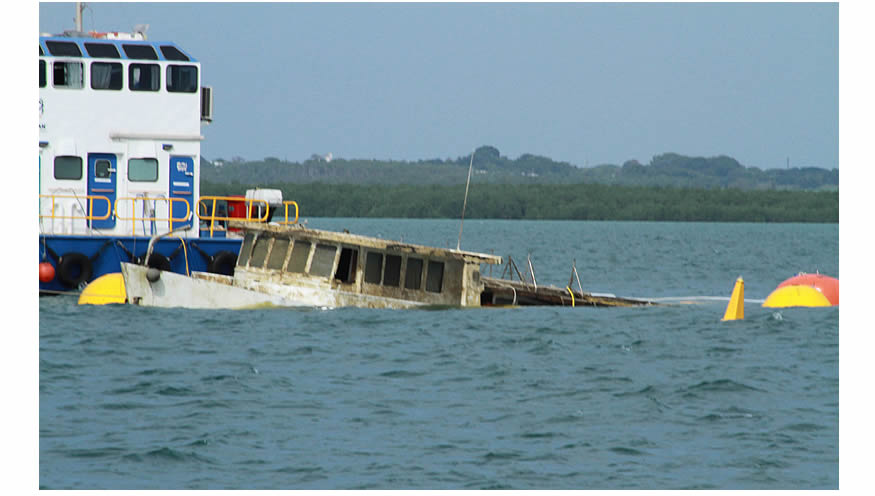
Photo: Bro Palmer
____________________________________________________________
10 November
Interview ABC Radio Darwin
Ambrose Palmer on HDML1321's history
____________________________________________________________
ABOUT HDML1321 - an important part of our military history.
This vessel is the first Harbour Defence Motor Launch (HDML) built in Australia and the last existing example in the country. Of all the HDMLs to serve in the Australian navy during WW2, it is arguably the one with the most outstanding record.
1321 played an important role with the Coastwatchers and "Z" Special Commando units in New Guinea waters during WW 2, including participation in Operation Copper in April 1945, where only one Z Special Commando survived out of eight men inserted onto Muschu Island off Wewak New Guinea.
____________________________________________________________
PALMER'S PIRATES
The Australian Defence Department has always been notorious for it's parsimonious attitude towards Australian troops when it comes to providing them with equipment. Read how HDML 1321's crew became experts at infiltrating US supply depots and installations in their search for weapons... 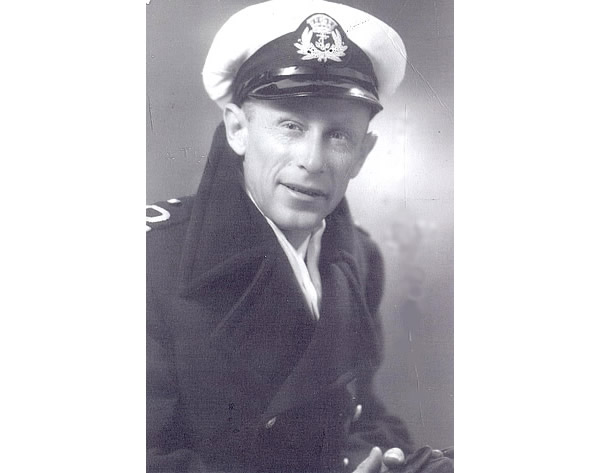
Lieutenant Ernie Palmer, 1943
1321 about to be launched, Hobart, November 1943
____________________________________________________________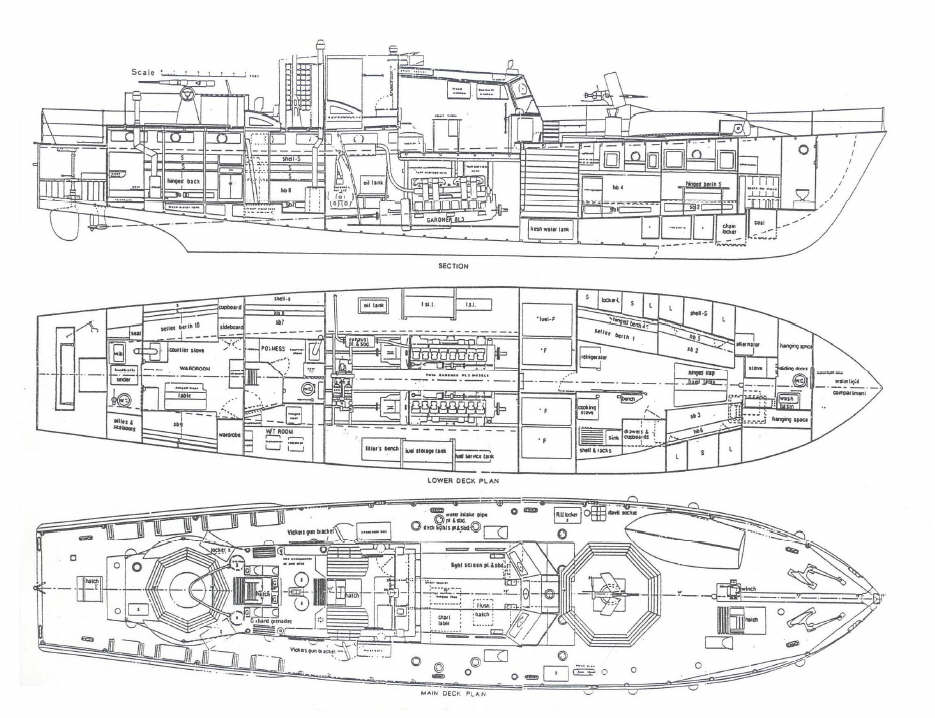
Typical HDML layout. Many of these small ships were customised for operations in different areas. 1321 for example, was 8 feet longer than the basic design.
____________________________________________________________
LINKS to NEWS ARTICLES about HDML1321
History of HDML1321 Australian Navy
Execution of an Australian Commando (PDF)
View Z Special Memorial Dedication, 1 August
ABC NEWS - Future Uncertain for 1321
Owners ordered to remove 1321
Tracey Geddes (Owner) explains
More about 1321 and Operation Copper
Read the editorial about 1321 in the NT News
___________________________________________________________
Extracts from The GUNS of MUSCHU (Allen and Unwin) describing HDML 1321's involvement in "Operation Copper".
___________________________________________________________
Diary of Sapper Mick Dennis the mission's only survivor. He begins this on April 3, when he was transported from Lae to Taji by HDML 1321. Eight days later the mission began.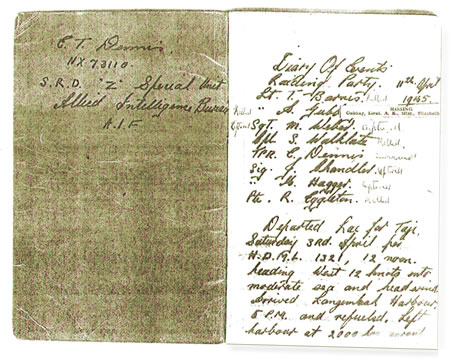
The Mission Begins
April 11, 1945
It was a clear, sunny day, with a light breeze ruffling the water. At 1100hrs, HDML 1321, with the men of Operation Copper on board, slipped its moorings and headed out of Aitape Harbour. Passing through lines of landing craft and freighters the patrol returned the waves of crews who paused to watch the little ship motor past. While the mission was secret, there were many who knew that the navy’s HDMLs worked with the “Z Special blokes” and to see one pass by loaded with determined looking men dressed in jungle green and wearing berets could only mean another Z Special operation was under way.
Once clear of the port the commander, Lieutenant Ernie Palmer, gave the order and the diesels were throttled up. HDML 1321 set course east, slicing through the long swell at twelve knots in an easy, comfortable motion. Palmer intended keeping well offshore until they sighted Vokeo Island, then using the island as a navigation marker, turn east and approach Muschu after dark – the somewhat round-about route chosen to remain clear of observation from both Muschu and Kairaru Island. It would take about eight hours to reach Vokeo, and from there another three to four hours to reach the drop off point.
The team’s foldboats were lashed to the deck on both sides of the ship and covered by canvas. Most of the equipment had already been stowed aboard the foldboats, so there was little for the patrol to do to pass the time. A few busied themselves by cleaning their Austens and rechecking their personal gear, but one could only occupy so much time in these tasks and after the first few hours, most of them were stretched out on the deck trying to sleep. Even that proved difficult for some, the combination of nerves and the ship’s motion keeping them awake, several of them becoming seasick.
The time before any mission is always testing even for the most seasoned veteran. It takes a tough mental attitude to prepare for the dangers that lie ahead and no amount of training can completely allay the nagging fears that inevitably enter one’s mind before the action begins. The worst enemy at these times is inactivity and soldiers will always find a way to divert their attention. Be it a game of cards, swapping stories or writing letters, all become diversions to stop them dwelling on their fears. Ironically as many soldiers will explain, often that fear isn’t about their own safety or survival, but how their death will affect their family or loved ones.
Many of the letters from that era reflect this and during HDML 1321’s run to Vokeo Island several of the patrol took the opportunity to write a final letter and entrust it to the crew who’d agreed to ensure it would be delivered if they didn’t return. This would be done via a network of couriers – soldiers, sailors or airmen going on leave who would circumvent the mail censorship regulations to make sure that parents, wives or lovers, received word without interference or delay. It was a practice the military found they couldn’t stop despite threats of the harshest punishment.
Those first hours of the voyage must have been particularly difficult for some of the Muschu team, for as one of the ship’s crew later described it; “The day was a perfect one, the soft rumble of the diesels, the easy motion of the boat through the blue water gave the impression that we were out for a pleasure cruise. Occasionally a wave broke over the bow sending spray high into the air to fall back over us in a fine mist. There were even flying fish that launched themselves off our bow wave then fell on the deck flapping and wriggling until they dropped over the side. It was times like these that it was hard to believe we were at war.”
At 1740hrs Vokeo Island was sighted. Lieutenant Palmer’s navigation and timing had been perfect and he ordered speed reduced to three knots, while maintaining heading towards the island. After dark he’d alter course and head in towards Muschu to position the patrol for insertion, but for now in the off-chance they were under observation, they’d give the impression that they were heading towards Vokeo.
Before last light the crew served up a meal of hot tea and corned beef sandwiches – after that the patrol would have to rely on their ration packs. Most ate heartily, spirits buoyed by the prospect of action, minds now focusing on the job ahead. Their final preparation was to “cam up” – blacken faces and areas of exposed skin. For this boot polish was used , during the application someone began a rendition of Al Jolsen’s “Mammy,” which although it was quickly ended by a curt order from one of the officers, shattered the tension that had been building for hours.
In the tropics, once the sun has set, darkness swiftly follows. That evening the sunset was a vivid display of gold and orange against a clear sky, with high clouds in the west over the mainland flickering with lightning. As the last glimmer of sun faded, HDML 1321 swung round onto a south westerly heading. Throttling up to full speed, the ship passed on a safe course through a minefield south of Kairiru Island then headed towards the eastern coast of Muschu. At 2230 hours Palmer calculated they were in position six kilometres south east of the island and throttled back until the boat was barely making headway.
The night was pitch black, the only light coming from the backdrop of stars. Just the vaguest silhouette of Muschu could be discerned with the naked eye, a blackness that disrupted the line of the horizon where the stars met the sea. It was said they could feel and smell the island rather than see it. Quickly the patrol made ready. First over the side were the foldboats. Then the two men per kayak slipped on board the tiny craft. A final equipment check, then amid whispered farewells and good wishes from the crew, they shoved off to be quickly lost from view. The departure time recorded in the ship’s log was 2315hrs.
HDML 1321 remained on station for another two hours in the event of the team making a sudden return, then on hearing nothing and knowing that they should have reached the shore within an hour and half, set about and powered away from the island to a position out of sight where they’d spend the daylight hours waiting. There the radio operator, seaman Ron Reynolds, sent a quick Morse transmission by HF radio back to Aitape.
"SL, SL, SL "
Code for mission successfully inserted.
____________________________________________________________
Ron Reynolds (left) 1321's radio operator.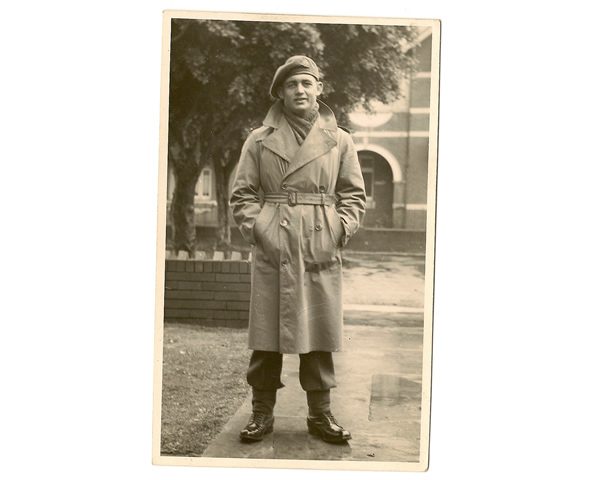
Sapper Mick Dennis, the only surviver of "Operation Copper." Taken on enlistment in 1942. Don't be fooled by that innocent smile!
Mick Dennis in 1945, after his return from the raid. Here seen with his sister Clare. 1932 Olympic swimming gold medalist and world record holder.
Hear a radio interview with Mick Dennis on ABC National radio, recorded in 2006 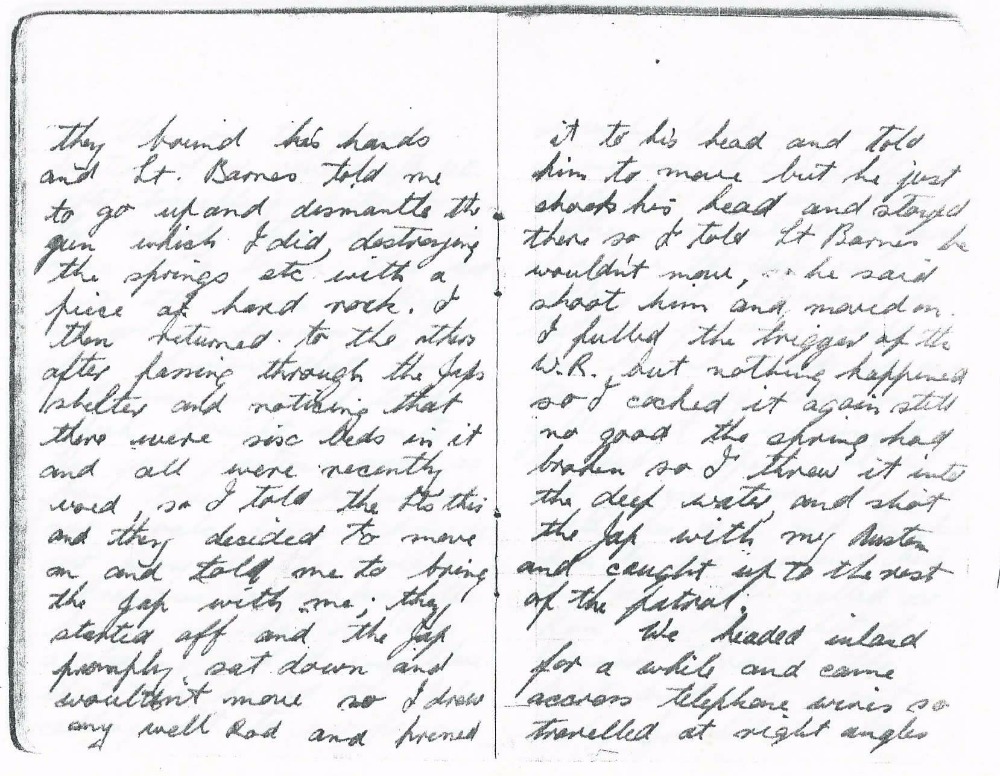
Diary extract - during the mission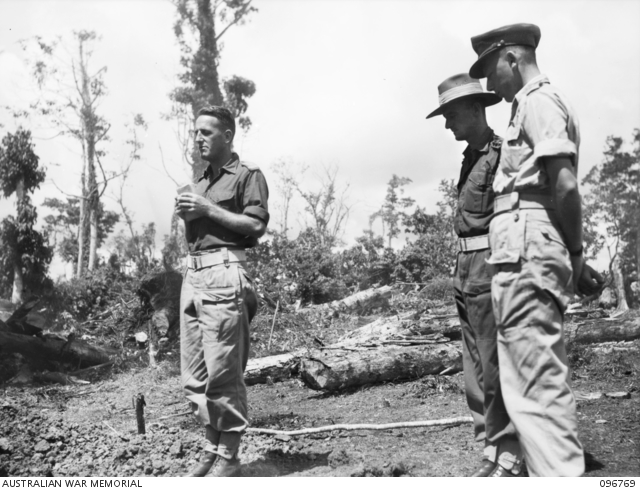
Burial of two of the commandos whose bodies were recovered after war's end in May, 1945. Major Cardew, head of the SRD, 6th Division, in right foreground.


